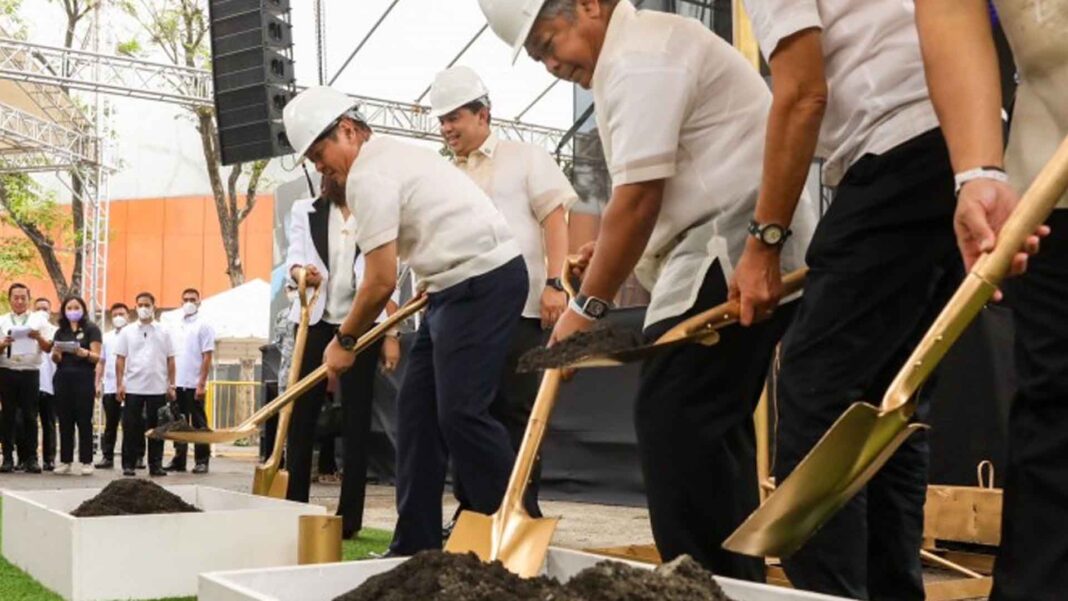President Ferdinand R. Marcos Jr. on Monday directed the Department of Transportation (DOTr) and stakeholders to ensure that the Cebu Bus Rapid Transit (BRT) project is finished within its timeline and guarantee that informal settlers affected by the transport project will be properly relocated.
“I also take the opportunity (for) the DOTr and other stakeholders to finish this project within the target completion timeline. I think that if we start operations in December, that will be the best possible Christmas gift that we can give to Cebu,” Marcos said in his speech as he led the ground-breaking rites of the CBRT Package 1 along Fuente Osmeña Circle, Cebu City.
The entire project which costs PHP16.3 billion will be fully operational in 2025.
“I want to remind the DOTr to ensure the just compensation of property owners who will be affected by the CBRT project. I also urge you to find ways to properly relocate the affected informal settler families,” he added.
Although the construction of the Cebu BRT will result in “slight inconveniences” and “traffic congestion,” this, however, would open more opportunities for Cebuanos and improve economic development in the city and province.
“Apart from the greater convenience that will bring to our people, I’m sure it will also provide greater opportunities and improve the conditions for our current public transport drivers. I trust (that) it will also support economic development through travel time savings and environmental improvement and reduction of accidents among residents and visitors of the city,” Marcos said.
He urged all stakeholders to remain patient and considerate as the temporary disturbances and interruptions would bring long-term benefits to the entire Cebu.
He assured that the national government remains committed to improving economic activities in the many parts of the country through the introduction of innovative solutions to public transport and the improvement of mobility infrastructure and others.
“My administration resolutely supports you in exploring ways to improve our public transport systems and in forging partnerships that will help the Philippines keep up with the innovative interventions of other progressive countries,” he said.
Likewise, he also assured that the Cebu BRT project has been planned thoroughly and studied by both the national and the local governments.
It has an outlying “urban realm enhancement projects for the beautification of the city along the BRT corridor,” and this includes the building of structures that promote non-motorized modes of travel like walking (lanes) and bicycle lanes.
“This has spanned years and across many administrations and it is modeled after other BRT systems such as the ones that we see in Seoul in South Korea, in Guangzhou in China amongst others,” he added.
Long time coming
It took around 20 years before the Cebu BRT project became a reality, according to the Presidential Communications Office.
The CBRT Project is a 13.8-kilometer segregated lane with 17 bus stations, one depot, and one trunk terminal that is expected to cater to approximately more than 160,000 passengers daily.
Package 1 of the CBRT covers the construction of four stations, a trunk service of 2.38 kilometers from the Cebu South Bus Terminal (CSBT) to the Capitol Building, and pedestrian improvement of 1.15 kilometers from N. Bacalso corner Osmeña Boulevard to Plaza Independencia.
It is designed to improve the overall performance of the urban transport system in Cebu City’s Project Corridor in terms of the quality and level of service, safety and environmental efficiency.
The CBRT is expected to be partially operational in the fourth quarter of 2023 and fully operational in the second quarter of 2025.
Under the project, buses will run on a dedicated lane on the center-most lanes, one in each opposite direction, while the rest of the lanes will be opened for mixed-use traffic.
Marcos also expressed appreciation to DOTr and stakeholders for their “dedication,” “hard work” and “persistence” in planning the project up until the start of its construction.
“My kudos to you for breaking ground on this project after more than a decade since it was first envisioned. Today, we are finally here to implement this plan and recalibrate the transport system of Metro Cebu,” he said.
“Thank you for helping provide Filipinos with more efficient, reliable, comfortable, and safer travel alternatives. There is no doubt that the fruits of your hard work will result in building modern and sustainable transit mechanisms that advance our citizenry’s quality of life,” he added.
He also expressed gratitude to the World Bank, and the French Development Agency for financing the project and to Chinese contractor Hunan Road and Bridge Construction Group Corporation Ltd. For helping the country realize the project. (PNA)



